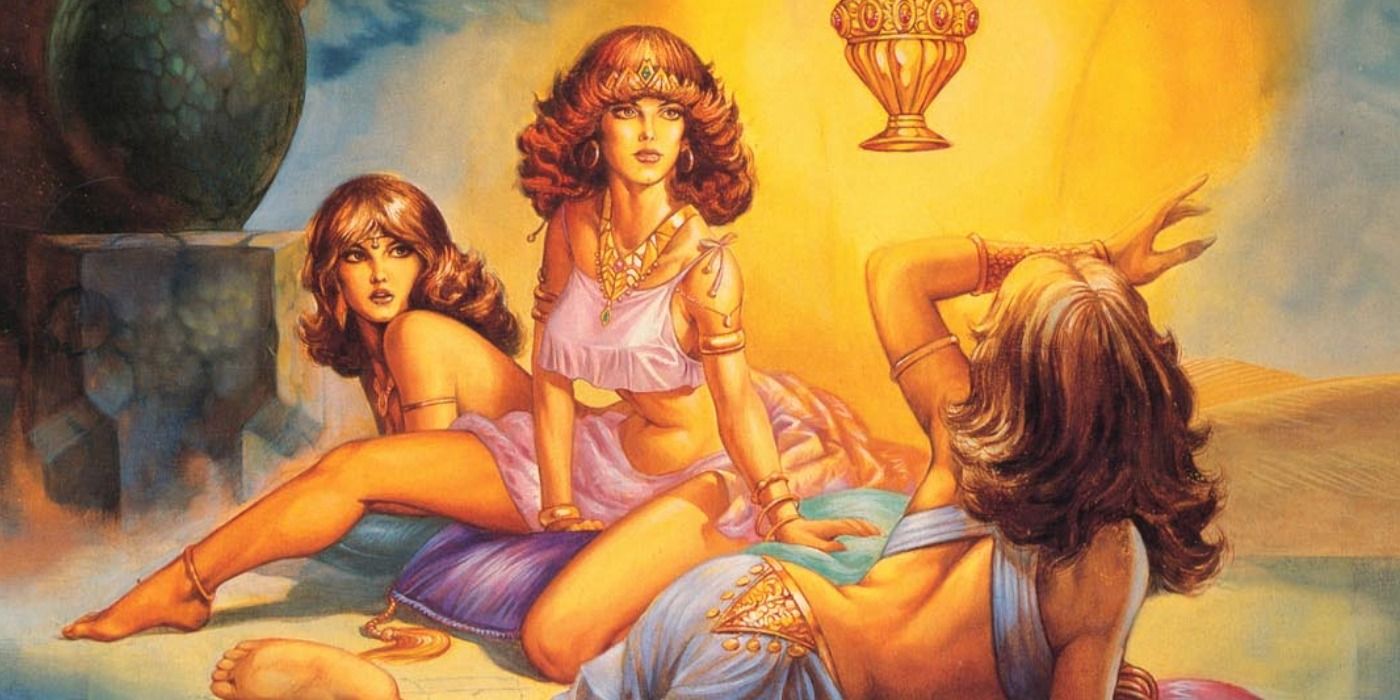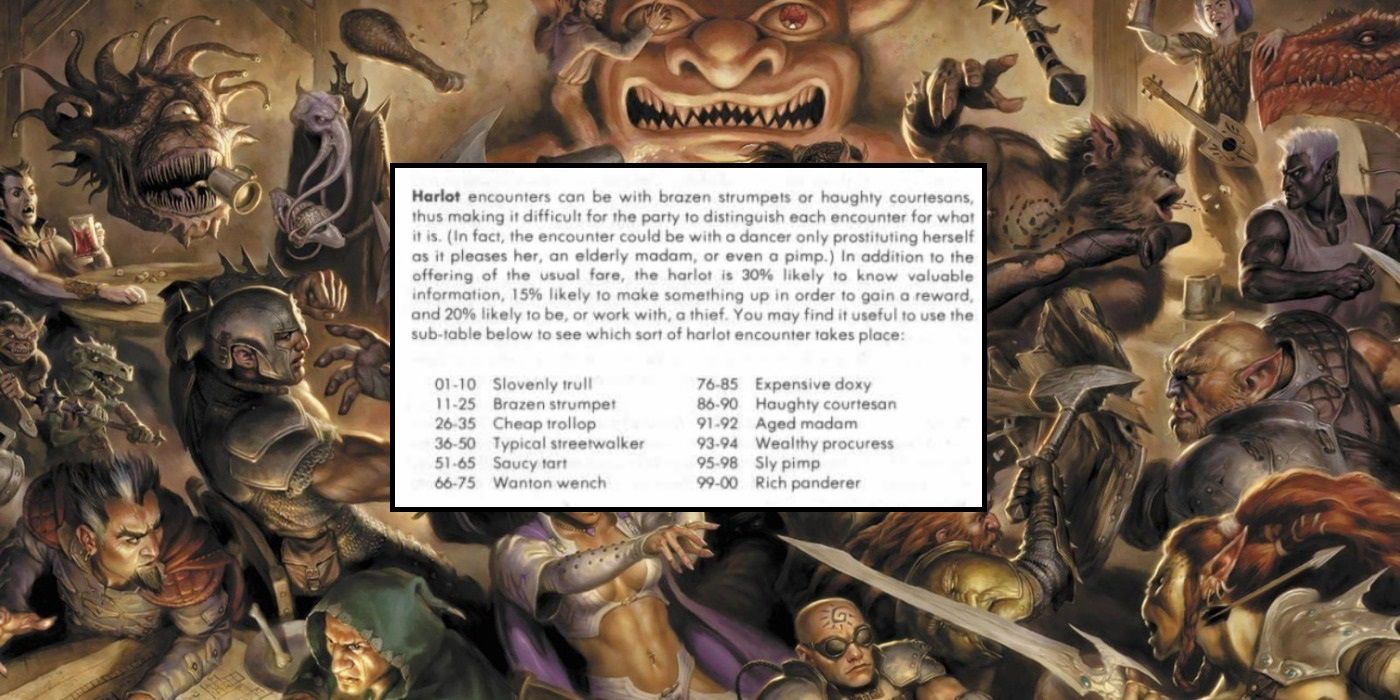The Dungeons & Dragons books contain a lot of random encounter tables in order for Dungeon Masters to surprise the player, and they certainly would be shocked if a roll was ever made on the Harlot table from the original Dungeon Master's Guide.
It's a common misconception about Dungeons & Dragons that the game is enjoyed exclusively by men. Dungeons & Dragons certainly had a boy's club attitude in the early days of the hobby, which was reflected in a lot of the fanservice-y depictions of female characters & monsters, but a lot of women have enjoyed the game throughout its history. Dungeons & Dragons had its best-ever year of sales in 2019, and Wizards of the Coast has revealed that women now make up 39% of the fanbase of the game.
The creators of Dungeons & Dragons started to make the game more inclusive with the third edition of the game, but some of the older books have questionable content which wouldn't be part of the modern D&D titles. In 1979, Dungeons & Dragons co-creator Gary Gygax penned the first-ever Dungeon Master's Guide for Advanced Dungeons & Dragons, which contained a number of random tables that a Dungeon Master could consult if they need some content on the spot. These charts were helpful for a beginner DM who was new to Dungeons & Dragons. The most infamous chart can be found on page one hundred and ninety-two, where the reader will find the random encounter table for harlots.
All it takes is two D10s for the Dungeon Master to determine which lady of the evening the party encounters when exploring a city. What makes this chart so amusing in hindsight is how later editions of the game worked so hard to scrub elements of sex and violence from the lore, as the owners were facing outside pressure from groups that were accusing the game of promoting Satanism.
Dungeons & Dragons faced a number of controversies over the years, but those were mostly from outside influences or legal problems. There was a lot of discussion about representation and sexism present within the text of the game, but those were from within the fanbase. Dungeons & Dragons players, for the most part, just roll their eyes whenever they see a chart like this, considering how early it was included in the game and the different social attitudes of the time. There are even some who use the chart whenever they purchase a new set of D10s to see how high/low they roll. The Harlot table is just an early curio from the days when the game was still finding its feet and the developers weren't quite clued in as to the audience they would attract in the future.


